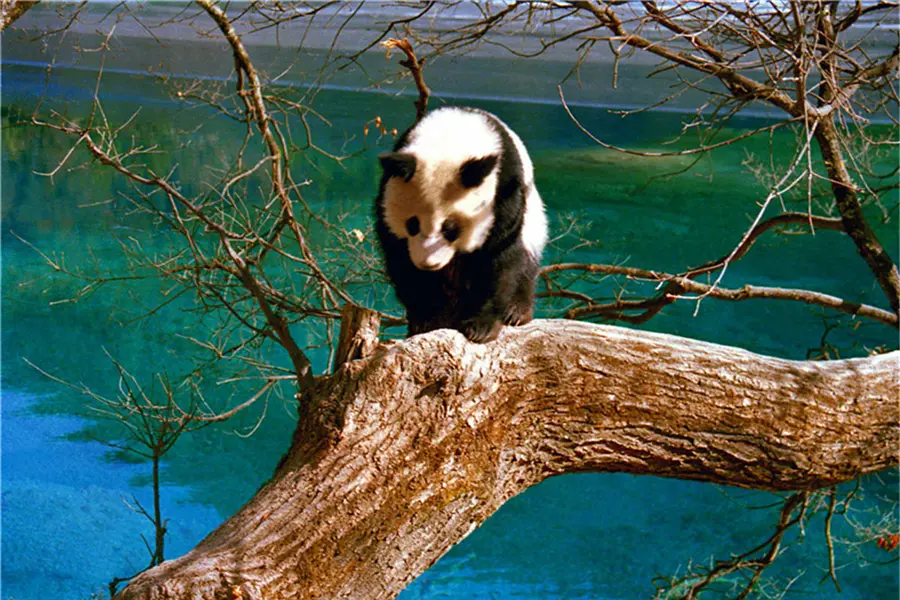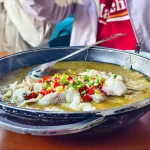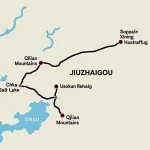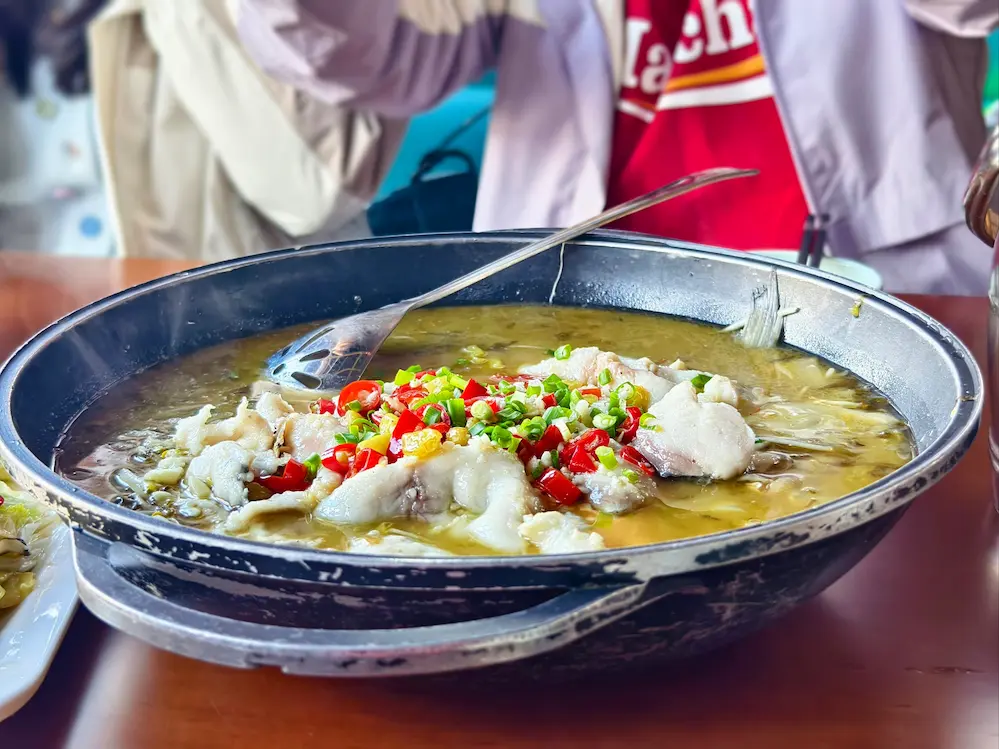Alpine forests: nature’s masters of mix-and-match
If you walk into the forests of Jiuzhaigou, you’ll feel like you’ve fallen into nature’s palette – firs and spruces plunge straight up into the sky like giants, and the birches and maples’ leaves turn fiery red and golden yellow in the fall.

The trees here are not neatly organized soldiers, but “liberals”, tall and short, fat and thin:
– Coniferous forests: the pine needles of the firs sweep across the sky like brushes, and the bark of the trees is covered with old men’s whiskers like pine roses.
– Broadleaf Forest: In the fall, the maple leaves are so red they look like they’ve been lit by the setting sun and rustle when you step on them.
– Hidden inhabitants: golden monkeys swing between the canopies, and squirrels drop crumbs on your head when they steal pine cones.
Calcarea Terrace Lakes: Nature’s Color-Mixing Magic
Jiuzhaigou’s lakes (locally known as “haizi”) are no ordinary puddles-they’re color-changing jewels! Why is the water in the Wuhua Sea so blue? The secret lies in:
– Calcified deposits: when the water flows over the limestone rock, it takes away the minerals and spreads a layer of “white sand beach” at the bottom of the lake, which reflects the sunlight in fantastic colors.
–Algae palette: different algae absorb the light and make the lake appear green, blue or even mauve.
–Seasonal Limited Skin: light green in spring, blue in summer, golden yellow in fall and icy blue in winter, more magical than your cell phone filter.
Waterfalls and Streams: A Symphony Orchestra Made of Water
The roar of Norilang Waterfalls can overpower car horns, and the pearl waterfall look like scattered diamonds in the sunlight. These streams are not only landscapes, they are lifelines:
– Oxygenating Machine: The turbulent water increases the oxygen in the water, keeping the rare Songpan naked carp alive.
– Natural humidifier: The humidity around the waterfalls is as high as 80%, and the moss is thick enough to be used as a mattress.
– Animal Watering Bar: In the early morning, you can see red pandas pouting and drinking water by the stream.
Plateau Wetland: Breathing Sponge Carpet
In the meadows above 3,000 meters above sea level, you will find:
– Flower Blanket: Gentian flowers dye the grass purple in summer, and from a distance, it looks like an overturned paint can.
– Biofilter: Wetland plants act like natural water purifiers, filtering melted snow water so that you can drink it directly.
– Hidden Party: Tibetan Horse Chickens forage in the grass with their young, and dry otters stand up to give you a salute.
Animal Neighbors Revealed
Jiuzhaigou is a real-life version of “Crazy Animal City,” inhabited by these stellar residents:
– Giant Pandas: Though shy and hard to see, gnawing on leftover bamboo stalks and fresh feces will give away your whereabouts.
– Sichuan snub-nosed monkeys: rock stars with mohawked heads and a family of up to 200.
– Green-tailed Rainbow Pheasant: with its metallic feathers, it looks like a moving rainbow in flight.
Ranger Li told me, “Last year, when I was patrolling the mountains, I saw a mother panda teaching her cub to climb a tree, and she looked exactly like a human with a baby.”
Special Forces in the Plant World
The plants here are all survival experts:
– Monocotyledon: a globally endangered species, with no more than 300 plants in the whole of Jiuzhaigou, and with leaves that look like emeralds kissed by angels.
– Snowdrops: the “Iceberg Beauty” that grows on the flowstone beach, takes 8-10 years to bloom.
– Red Bean Pine: the bark of the tree can extract anticancer drugs, and loggers have to sit in jail for 10 years.
Four Seasons Ecological Theater
– Spring (April-May): wildflowers emerge from the snow and black-necked cranes fly back from the south.
– Summer (June-August): Rhododendrons bloom all over the mountain slopes and yaks have buffet in the meadows.
– Autumn (September-October): colorful forests reflect in the lake, and squirrels frantically hoard pine cones.
– Winter (December-February): Cold-water fish swim in the cracks of blue ice.
Want to know the weather in Jiuzhaigou from January to December? Click to view
How humans guard this pure land
Jiuzhaigou’s ecological protection is stricter than you might think:
– Daily flow limit of 41,000 people: stricter than Disney’s queue control.
– All-electric sightseeing buses: exhaust fumes? Doesn’t exist.
– Toilet on the cliff: with microbial decomposition technology, feces into fertilizer to return to the mountains.
Tour guide Yang said, “Last time a tourist threw a cigarette butt and was punished for picking up garbage for 3 hours, and now seeing a garbage can is more intimate than seeing your own mother.”
This is how you can get involved in conservation
– Take away the memories, leave the footprints: use your cell phone to photograph pine cones instead of picking them.
– Be a qualified eater: only buy yak jerky from regular stores and refuse wildlife products.
– Report: Call the police immediately when you see logging or poaching.
Why do creatures live and thrive here?
The secret of Jiuzhaigou is hidden in the altitude drop — from 2,000 to 4,500 meters, the equivalent of ascending from Atlanta directly to the top of the Rocky Mountains.
This three-dimensional climate allows frigid, temperate and subtropical organisms to find their own “comfort zones”, just like a natural apartment building for animals.
Next time you come to Jiuzhaigou, don’t forget to bring your binoculars – those swaying treetops and rippling lakes are all life saying hello to you!





